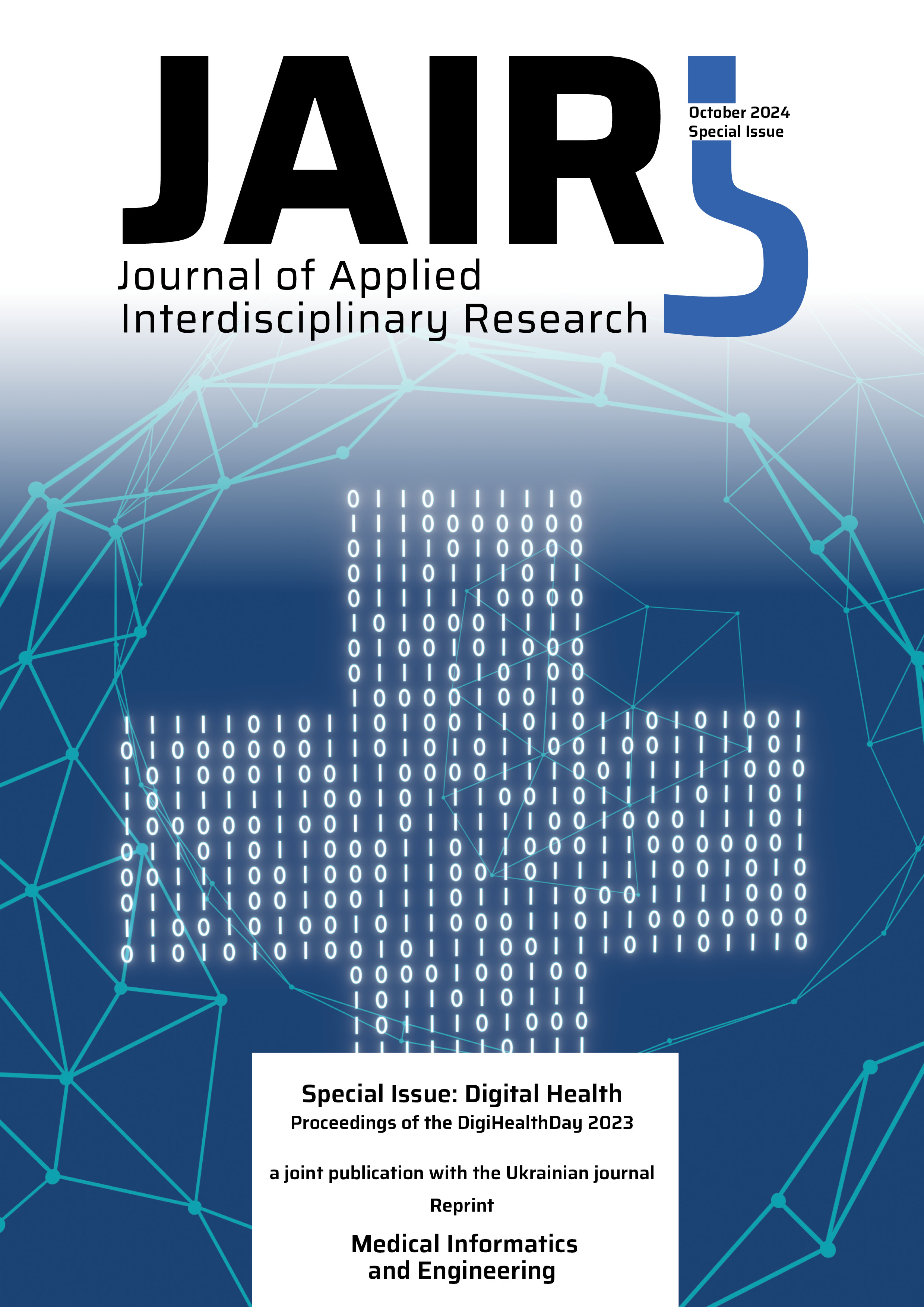Medical Data Compatibility Problems in the Tasks of Information Systems Integration
Main Article Content
Keywords
integration of medical data, interoperability of medical data, portfolio of doctors and pharmacists, information and communication systems, 4P medicine, interoperable data standards, metadata
Abstract
Integration of medical data is a critical component of the functioning of modern healthcare systems and a primary task of personalized medicine. Aggregating data from disparate sources, such as electronic medical records and medical devices, allows service providers to obtain a complete picture of patients' health status and optimize workflows.
It is noted that the strategy of integration is closely linked with the logic of medical data compatibility. The problems of integration also reflect in the tasks of creating Portfolios for physicians and pharmacists. Research objective. Summary of biomedical data compatibility issues. It is emphasized that data compatibility depends on the consistency of standards applied in programs. The quality of data also requires special attention. This directly affects the quality of the decisions made. Although data interoperability is one of the primary requirements of information and communication systems (ICS), it is often overlooked. As a result, data exchange is not performed, significantly limiting the flow of information. The problem of large dimensionality is also serious. It is evident that such multidimensional and labor-intensive computational processes are a primary task for modern algorithms and models of artificial intelligence (AI) and machine learning (ML).
It is highlighted that one of the ways to solve the problems of standardization and integration of large-scale medical data are metadata, which are also useful for improving statistical analysis, probabilistic models, and ML models. Conclusions. 1. Precision Medicine (4P Medicine) was introduced as a new paradigm approach to healthcare with a more predictable, preventive, personalized, and participatory manner. Precision medicine is closely related to data-intensive approaches, as well as to ML and AI. 2. Integration of data for placement in structures useful for precision medicine is only possible after several previous stages of their processing, namely: data (metadata) collection, processing, obtaining 'clean' data, data compression. 3. To realize the prospects of precision medicine, approaches to computational learning must evolve with the help of well-chosen and well-integrated digital data ecosystems.
References
2. Choi E, Xu Z, Li Y, Dusenberry M, Flores G, Xue E, et al. Learning the graphical structure of electronic health records with graph convolutional transformer. In: Proceedings of the AAAI Conference on Artificial Intelligence. Vol. 34, New York, NY: 2020. p. 606–613.
3. Unberath P, Prokosch HU, Gründner J, Erpenbeck M, Maier C, Christoph J. EHR- independent predictive decision support architecture based on OMOP. Applied Clinical Informatics. 2020;11:399–404. https://doi.org/10.1055/s-0040-1710393.
4. Mirza B, Wang W, Wang J, Choi H, Chung NC, Ping P. Machine Learning and Integrative Analysis of Biomedical Big Data. Genes (Basel). 2019;10(2):87. https://doi.org/10.3390/genes10020087.
5. Chow N, Gallo L, Busse JW. Evidence-based medicine and precision medicine: Complementary approaches to clinical decision-making. Precision Clinical Medicine. 2018;1(2):60-64. https://doi.org/10.1093/pcmedi/pby009.
6. Vazquez M, Valencia A. Patient Dossier: Healthcare queries over distributed resources. PLoS Computational Biology. 2019;15(10):e1007291. https://doi.org/10.1371/journal.pcbi.1007291.
7. Shaibi GQ, Kullo IJ, Singh DP, Hernandez V, Sharp RR, Cuellar I, et al. Returning genomic results in a Federally Qualified Health Center: the intersection of precision medicine and social determinants of health. Genetics in Medicine. 2020;22(9):1552–1559. https://doi.org/10.1038/s41436-020- 0806-5.
8. Özdemir V, Kolker E, Hotez PJ, et al. Ready to put metadata on the post-2015 development agenda? Linking data publications to responsible innovation and science diplomacy. OMICS – A Journal of Integrative Biology. 2014;18(1):1–9. https://doi.org/10.1089/omi.2013.0170.
9. Sass S, Buettner F, Mueller NS, Theis FJ. A modular framework for gene set analysis integrating multilevel omics data. Nucleic Acids Research. 2013 Nov;41(21):9622–9633. https://doi.org/10.1093/nar/gkt752.
10. Meng C, Kuster B, Culhane AC, Gholami AM. A multivariate approach to the integration of multi-omics datasets. BMC Bioinformatics. 2014 May 29;15:162. https://doi.org/10.1186/1471-2105-15-162.
11. Fagan A, Culhane AC, Higgins DG. A multivariate analysis approach to the integration of proteomic and gene expression data. Proteomics. 2007 Jun;7(13):2162–2171. https://doi.org/10.1002/pmic.200600898.
12. Fan J, Han F, Liu H. Challenges of Big Data Analysis. National Science Review. 2014 Jun;1(2):293–314. https://doi.org/10.1093/nsr/nwt032.
13. Norgeot B, Quer G, Beaulieu-Jones BK, et al. Minimum information about clinical artificial intelligence modeling: the MI-CLAIM checklist. Nature Medicine. 2020 Sep;26(9):1320–1324. https://doi.org/10.1038/s41591-020-1041-y.


